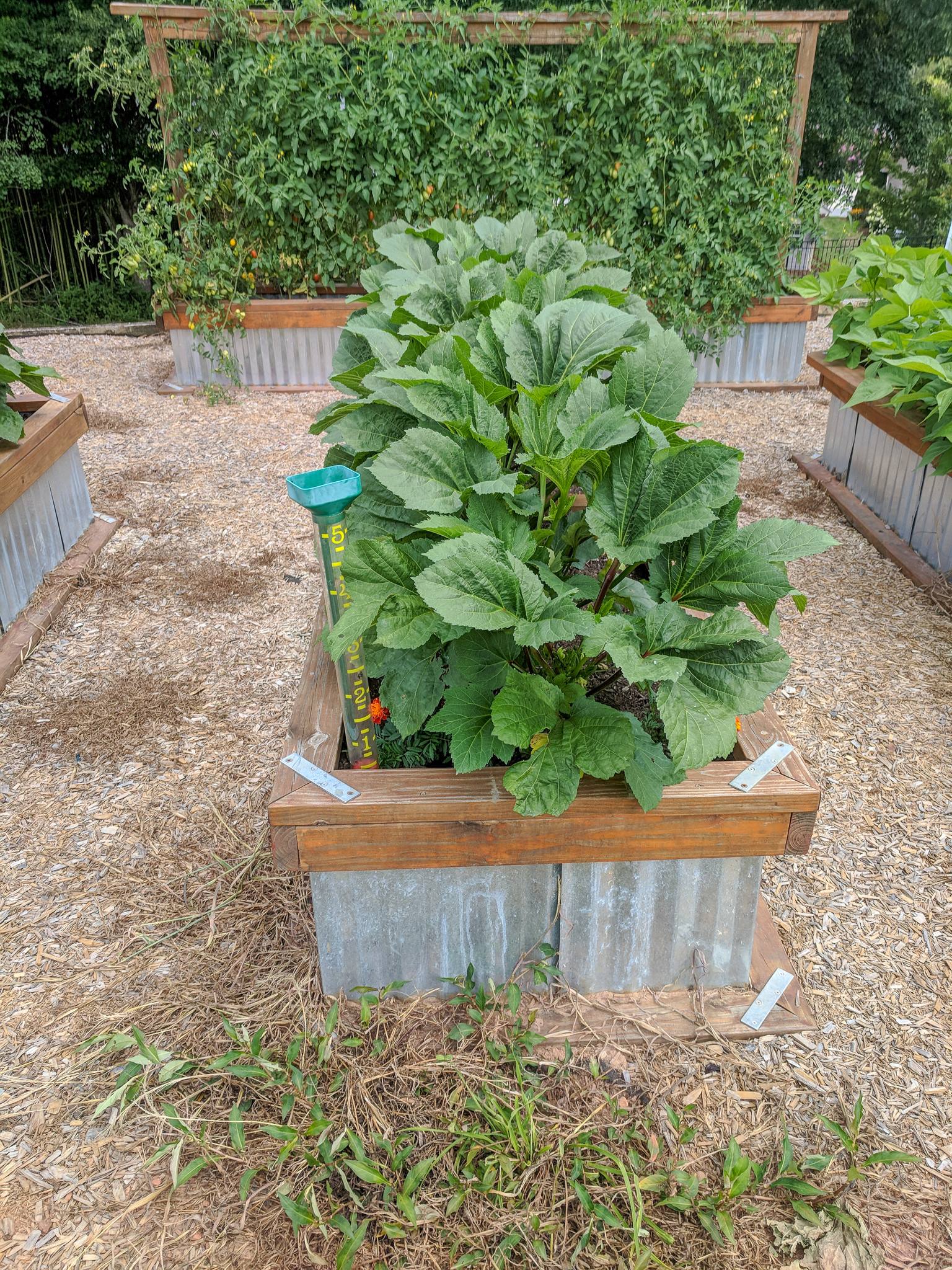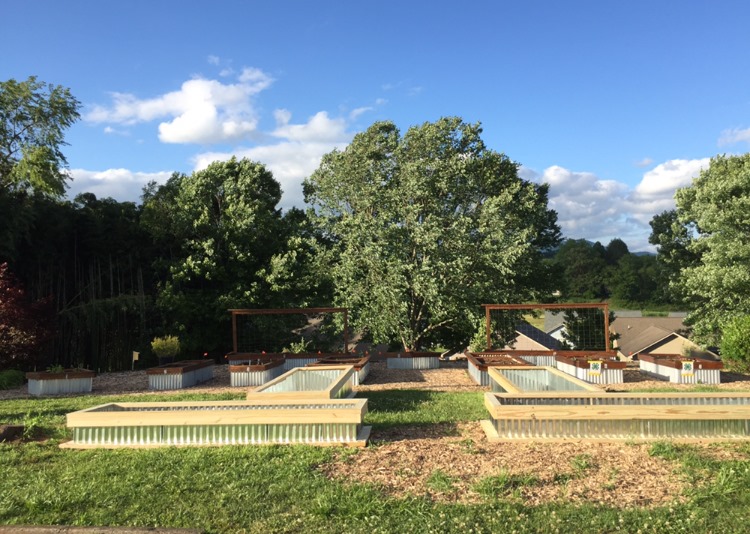Getting Started With Raised Bed Gardening
go.ncsu.edu/readext?1070489
en Español / em Português
El inglés es el idioma de control de esta página. En la medida en que haya algún conflicto entre la traducción al inglés y la traducción, el inglés prevalece.
Al hacer clic en el enlace de traducción se activa un servicio de traducción gratuito para convertir la página al español. Al igual que con cualquier traducción por Internet, la conversión no es sensible al contexto y puede que no traduzca el texto en su significado original. NC State Extension no garantiza la exactitud del texto traducido. Por favor, tenga en cuenta que algunas aplicaciones y/o servicios pueden no funcionar como se espera cuando se traducen.
Português
Inglês é o idioma de controle desta página. Na medida que haja algum conflito entre o texto original em Inglês e a tradução, o Inglês prevalece.
Ao clicar no link de tradução, um serviço gratuito de tradução será ativado para converter a página para o Português. Como em qualquer tradução pela internet, a conversão não é sensivel ao contexto e pode não ocorrer a tradução para o significado orginal. O serviço de Extensão da Carolina do Norte (NC State Extension) não garante a exatidão do texto traduzido. Por favor, observe que algumas funções ou serviços podem não funcionar como esperado após a tradução.
English
English is the controlling language of this page. To the extent there is any conflict between the English text and the translation, English controls.
Clicking on the translation link activates a free translation service to convert the page to Spanish. As with any Internet translation, the conversion is not context-sensitive and may not translate the text to its original meaning. NC State Extension does not guarantee the accuracy of the translated text. Please note that some applications and/or services may not function as expected when translated.
Collapse ▲Raised bed gardening is a popular and efficient way to grow vegetables, herbs, and flowers, especially in areas with poor native soil, limited space, or challenging growing conditions. Whether you’re a beginner or an experienced gardener, raised beds offer several benefits, including improved soil drainage, easier weed control, and reduced soil compaction. Here’s a practical guide covering key aspects of raised bed gardening, from materials and construction to planting and maintaining soil health.
Why Choose Raised Beds?
Raised beds are garden boxes filled with soil above the ground level. They offer a range of benefits:
- Better drainage, which prevents waterlogging
- Improved soil control, allowing you to customize your growing medium
- Easier access, reducing bending and kneeling
- An extended growing season, as the soil warms up faster in spring
- Fewer weeds and pests, especially with barriers or covers
Materials for Building Raised Beds
When selecting materials, aim for durability and safety:
- Wood – cedar, redwood, or pressure-treated pine labeled safe for food gardens
- Concrete blocks or bricks – stable but may leach lime, affecting soil pH
- Metal – corrugated steel panels are durable and modern-looking
- Recycled materials – like food-safe barrels cut in half or repurposed timbers
Size guidelines:
- Width: No more than 4 feet (so you can reach the middle from either side)
- Height: 10–18 inches is typical, but go taller if accessibility is a concern
- Length: As long as space allows
Preparing the Site
- Choose a location with at least 6–8 hours of sunlight per day.
- Clear the area of grass and weeds. Laying cardboard or landscape fabric at the base can help suppress future weed growth.
- Level the ground to avoid uneven settling.
Filling the Raised Bed: Soil Health First
Good soil is the foundation of raised bed success. A quality raised bed mix typically includes:
- 40% compost – for nutrients
- 40% topsoil – provides structure
- 20% aeration material, such as coarse sand, pine bark fines, or perlite -improves drainage
If you’re buying pre-mixed soil, look for “raised bed mix,” or amend bagged garden soil with compost and organic matter. Avoid using pure potting soil or native clay-heavy soil. You can also fill the bottom layer of the beds with compostable materials, such as leaves and limbs, to take up space and use less soil.
Soil Maintenance Tips:
- Replenish compost annually
- Test the soil every 1–2 years to monitor pH and nutrient levels
- Use mulch to suppress weeds and retain moisture
- Rotate crops yearly to reduce pest and disease pressure
Planting in Raised Beds
Spacing and Layout:
- Use square-foot gardening or block planting methods to maximize space
- Group plants by growth habits – tall plants on the north side, vining crops with trellises
- Practice companion planting to boost growth and deter pests
Watering:
- Raised beds dry out faster than in-ground gardens, so water consistently
- Consider installing drip irrigation or soaker hoses under mulch
- Water deeply, aiming for 1 inch of water per week
What to Plant
You can grow almost anything in a raised bed that you could in the ground. Popular choices include:
- Cool-season crops: lettuce, spinach, radishes, carrots, onions
- Warm-season crops: tomatoes, peppers, squash, cucumbers, beans
- Perennials: strawberries, asparagus, herbs
Managing Weeds and Pests
- Mulch with straw, pine needles, or shredded leaves to suppress weeds
- Use row covers to protect from insects and sudden frosts
- Hand-pull weeds regularly before they take root
- Encourage beneficial insects like ladybugs and lacewings by planting flowers like marigolds and alyssum
End-of-Season Care
- Remove spent plants and compost healthy debris
- Add a layer of compost or mulch to protect the soil over winter
- Cover with a tarp or grow a winter cover crop to prevent erosion and add organic matter
More Resources
Extension Master Gardener℠ Volunteers Raised Bed Plans
Planting Tomatoes in Raised Beds
Soil, Plots, & Planters
Vegetable Gardening Guide
Raised Bed Gardens
Building Raised Beds
Raised Bed Gardening






